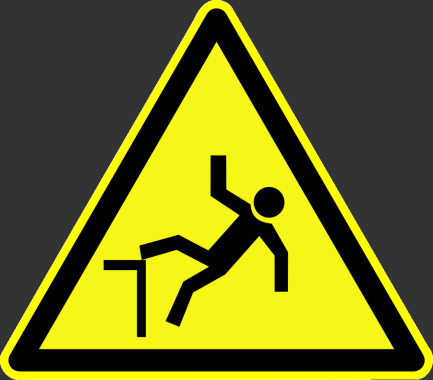Each year, one in every three adults age 65 and older falls. Falls are a common and often a devastating problem among older adults. The results of falls cause a tremendous amount of morbidity, mortality and use of health care services including premature nursing home admissions. The better our balance, the less likely we are to sustain a fall. A key to understanding fall prevention is understanding what balance is in the first place.
What is Balance?
In simple terms, balance is the ability to walk to your living room or bathroom in the day or night, or across your lawn/driveway/woods and stay upright. Physiologically, balance is a complex interaction of sensory information from the eyes, position receptors (proprioceptors) from the muscles and tendons, and input from the inner ear. This coordination of sensory input and motor output through the brain and the muscles and joints allows us to maintain our center of gravity, and therefore our sense of balance.
Balance, like a lot of things, is a skill that can be improved. It is a learned movement pattern which requires practice to gain, regain, and maintain. As we transition from childhood to adulthood, we generally improve our balance through practice during progressively more intense and complex physical activity and exercise. With time, we often see a gradual decrease in the amount of both physical activity and exercise, leading to a decline in the amount of practice of challenging our balance. In addition, we experience age related changes in our bodies that contribute to declines in balance and increase our risk of falling.
Typical Changes with Aging Associated with Balance Decline
Most commonly, we experience a decrease in ROM and strength in the joints of the ankles, knees, and hips, slowing of our natural reflexes and reaction time. We also experience vision changes that reduce our ability to monitor our environment. These normal aging processes often contribute to an increase in frequency of falling , but there can be other contributors as well.
Causes of Falls
Most falls are associated with one or more identifiable risk factor which can come from within the body or be part of the environment. Internal (intrinsic) contributors within the person include many that we have already discussed: decreases in vision, strength, and balance. Other intrinsic factors may include decreased hearing and lack of sleep. Taking many medications, especially 4 or more, is also a risk factor. Side effects of certain types of medications (Anti-hypertensives, beta/calcium channel blockers, bronchodilators, antihistamines, muscle relaxants, and diabetic medications, to name a few) can also affect cognition, coordination, and muscle strength. Decreased mental status, particularly dementia, also increases the risk of falls. Finally, any chronic disease will affect the person’s ability to maintain balance sentence needs to be re-worded or finished.
Extrinsic or environmental factors include stairs, loose rugs and carpets, cords or clutter that create trip hazards, as well as wet surfaces such as around the sink, tub, or pet dishes. In addition, poor lighting at night or simply hurrying or rushing about are other common causes of falls.
How do you know if you are at risk?
In addition to recognizing the presence of the above mentioned causes of falls that exist in your life, a quick self-assessment of your own ability to balance is the Single Leg Stance test. According to a study in the Journal of the American Geriatrics Society, if you are unable to balance on one leg for 5 seconds, you are at risk for an injurious fall.
What can you do to prevent a fall?
- Begin a regular exercise program
- Review your medications with your health care provider or pharmacist
- Remove loose rugs, secure electric cords, and install night lights
- Reduce or modify high risk behaviors such as standing on ladders / roofs / etc.
- SEE A PHYSICAL THERAPIST
Current evidence indicates that the most effective and cost effective fall reduction programs incorporate a comprehensive fall risk assessment and an exercise program focusing on strength, flexibility, and balance. Many physical therapists can help you to develop an individualized safe and effective exercise program that takes into account your specific limitations with programs designed to do just that. A comprehensive balance program will keep you fit as well as safe.
Fear of falling can be a major problem as it restricts activity and can result in more incoordination and loss of strength. Even people who have never experienced a fall can experience a reduction in their activity level due to a fear of falling. Now that you have an awareness of the factors that can lead to a fall, I encourage you to address your risk factors and regain control of your mobility and your quality of life!







